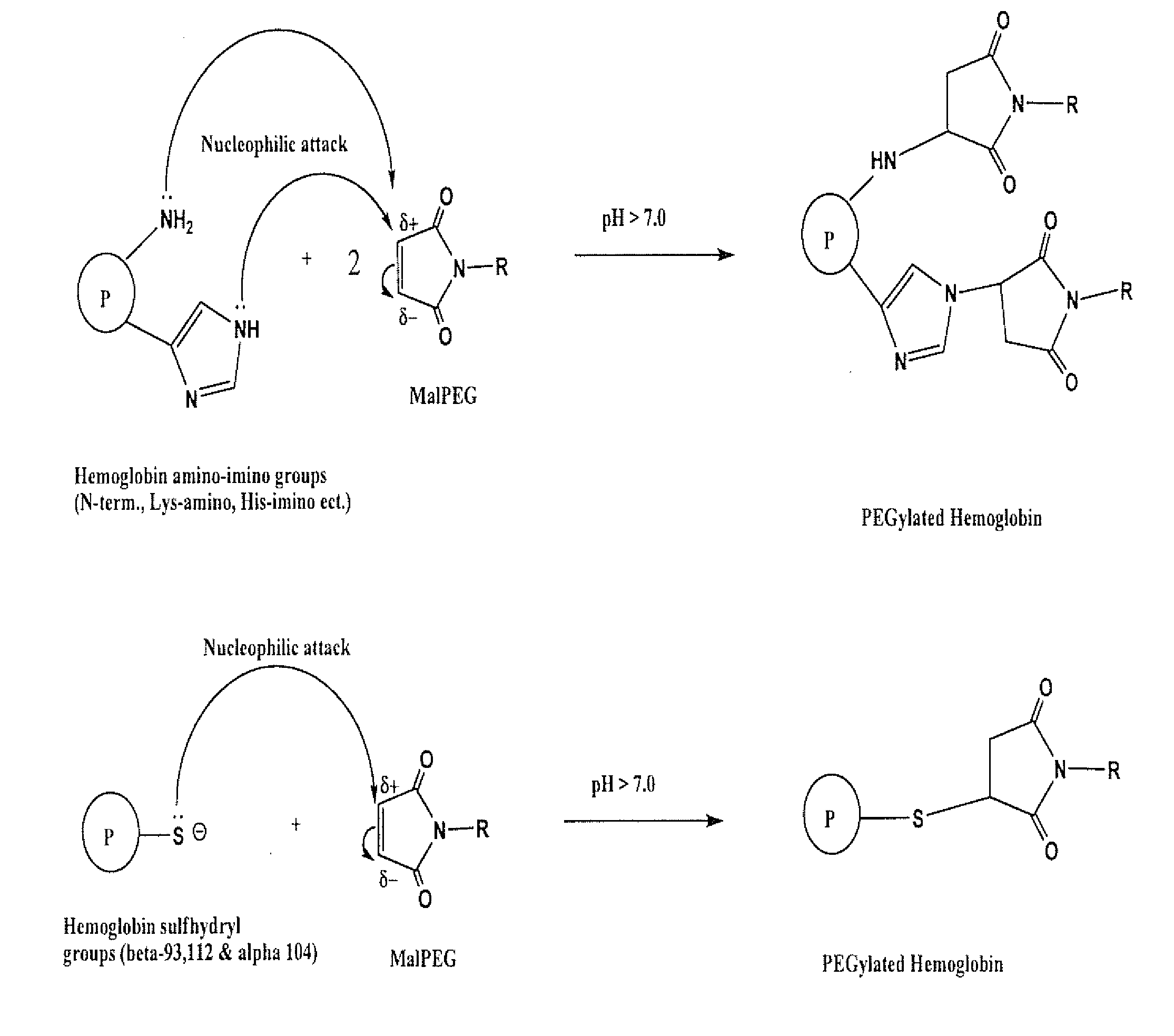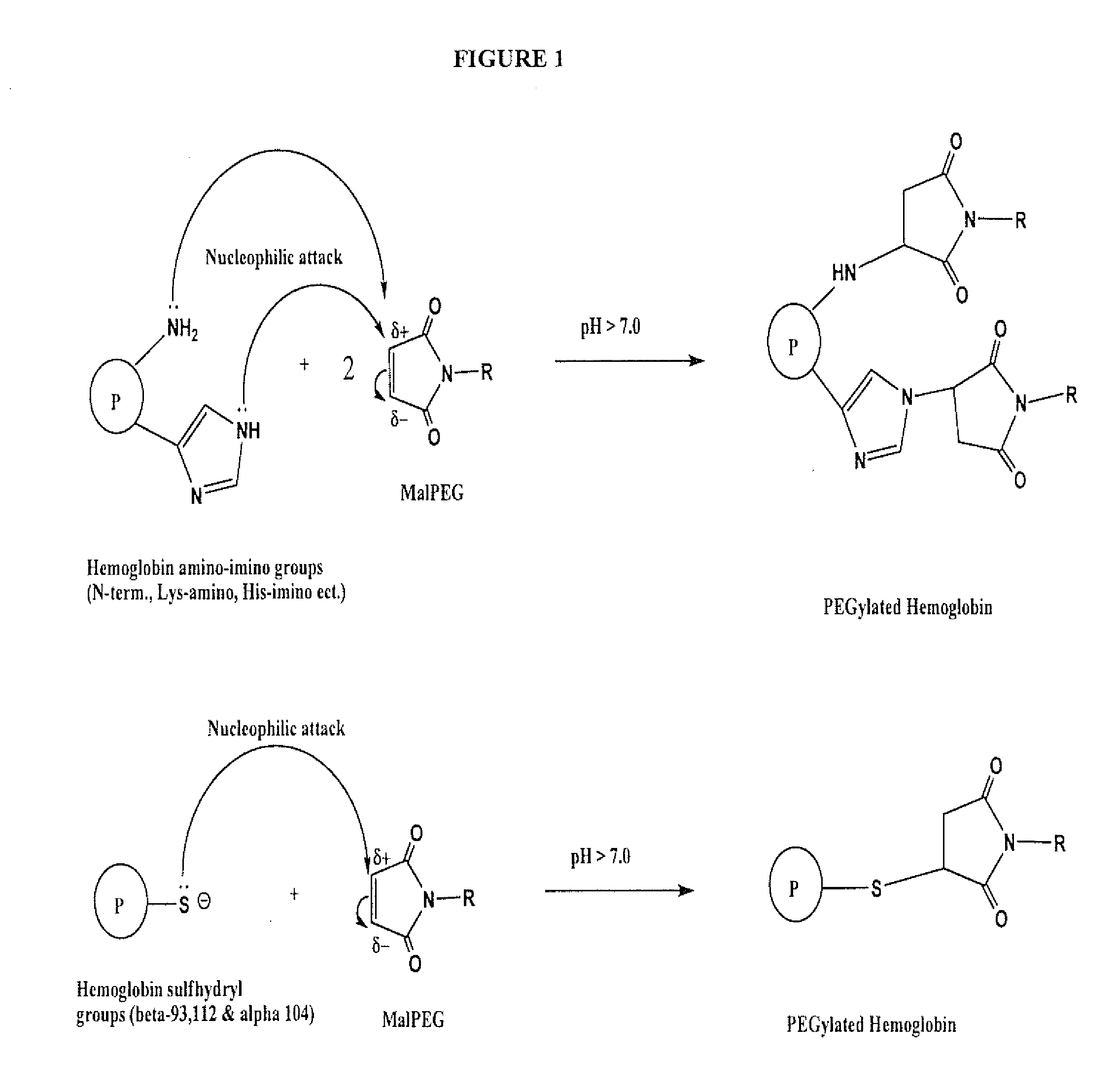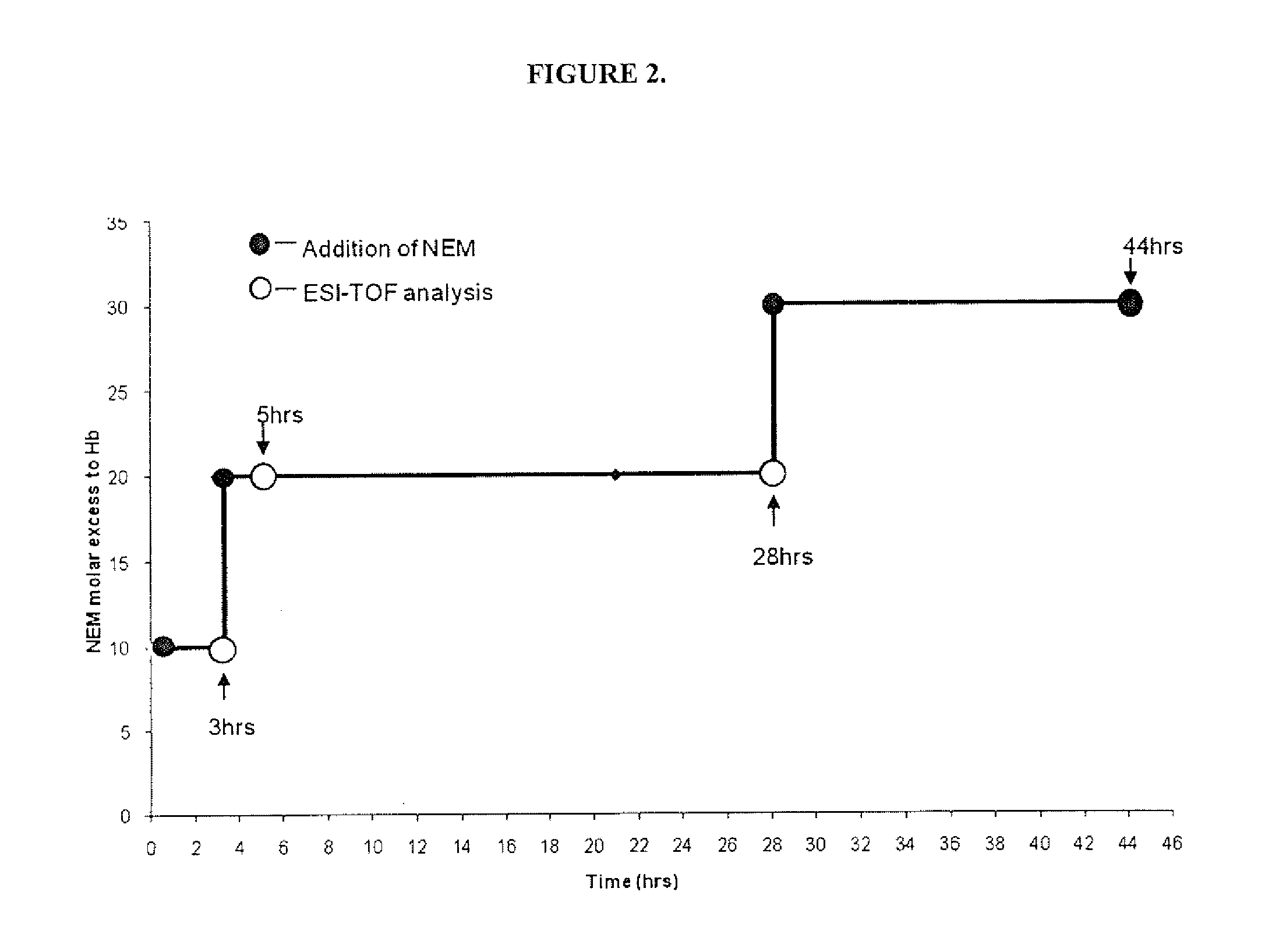Method for making polyalkylene oxide modified hemoglobin
a technology of polyalkylene oxide and hemoglobin, which is applied in the field of hemoglobin-based oxygen carriers, can solve the problems of ineffective carrying of too costly for widespread use, and inability to carry enough oxygen at clinically tolerated doses to be effective,
- Summary
- Abstract
- Description
- Claims
- Application Information
AI Technical Summary
Benefits of technology
Problems solved by technology
Method used
Image
Examples
experiment 1
Production of Stroma-Free Hemoglobin (SFH)
[0071]Outdated packed red blood cells are procured from a commercial source, such as from a local Blood Bank, the New York Blood Center, or the American Red Cross. Preferably, outdated material is received not more than 45 days from the time of collection. All units are screened for viral infection and subjected to nucleic acid testing prior to use. Non-leukodepleted pooled units are leukodepleted by membrane filtration to remove white blood cell. Packed RBCs (pRBCs) are stored at 2-15° C. until further processing. Packed red blood cells are pooled into a sterile vessel in a clean facility. Packed red blood cell volume is noted, and hemoglobin concentration is determined using a commercially available co-oximeter or other art-recognized method.
[0072]Red blood cells are washed with six volumes of 0.9% sodium chloride using a 0.45-μm tangential flow filtration, followed by cell lysis by decreasing the concentration of salt and hemoglobin extra...
experiment 2
Production of PEGylated Deoxyhemoglobin (PEG-deoxyHb)
[0073]SFH at 0.5 mM (tetramer) in RL or PBS, pH 7.5-9.0, is deoxygenated by gas exchange using a hollow-fiber filter to ≧90% deoxyhemoglobin. The deoxygenated hemoglobin solution is mixed with 5 mM MalPEG dissolved in deoxygenated RL (pH 7.0-7.5) or PBS (pH 7.4) for 3 hours at 30±5° C. with continuous stirring. After 3 hours, an additional 5 mM MalPEG dissolved in deoxygenated RL (pH 7.0-7.5) or PBS (pH 7.4) is added to the reaction mixture with continuous stirring for another 2 hours. After a total of 5 hours of reaction, the mixture is processed by 70-kD tangential flow filtration under deoxygenated conditions, using 10 dia-volumes of RL or PBS to remove excess unreacted reagents and / or hemoglobin. The PEG-deoxyHb is diluted to 4-8 g / dL, and pH is adjusted to 7.4±0.4 using 1N NaOH.
[0074]The final PEG-deoxyHb product is collected into a sterile depyrogenated vessel at 4±2° C. The sterilized PEG-deoxyHb is then diluted to 4-6 g / dl...
experiment 3
Identification of Sites of Modification and Number of PEGs Conjugated to PEG-deoxyHb
[0075]The sites of modification were determined using the reaction as described in Experiment 2 using N-ethyl maleimide (NEM) in place of MalPEG because the MalPEG raw material has a wide mass distribution (˜5500=750 Daltons) that cannot be resolved by electrospray time-of-flight mass spectrometry (ESI-TOF MS). It should be understood that the reaction of NEM with exposed Hb side groups would result in the same surface modification “pattern” as that achieved with MalPEG. The reaction was followed for up to 44 hours, and the reaction scheme is shown in FIG. 1.
[0076]NEM-Hb samples were subjected to SDS-PAGE on Bis-Tris precast gels, with a 4-12% gradient. Gels were stained with Coomassie blue. After staining, NEM-Hb bands were excised and pretreated prior to in-gel trypsin digestion. Reduction of disulfide linkages was performed using 10 mM dithiothreitol, followed by alkylation with 55 mM iodoacetamid...
PUM
| Property | Measurement | Unit |
|---|---|---|
| molecular weight | aaaaa | aaaaa |
| molecular weight | aaaaa | aaaaa |
| affinity | aaaaa | aaaaa |
Abstract
Description
Claims
Application Information
 Login to View More
Login to View More - R&D
- Intellectual Property
- Life Sciences
- Materials
- Tech Scout
- Unparalleled Data Quality
- Higher Quality Content
- 60% Fewer Hallucinations
Browse by: Latest US Patents, China's latest patents, Technical Efficacy Thesaurus, Application Domain, Technology Topic, Popular Technical Reports.
© 2025 PatSnap. All rights reserved.Legal|Privacy policy|Modern Slavery Act Transparency Statement|Sitemap|About US| Contact US: help@patsnap.com



